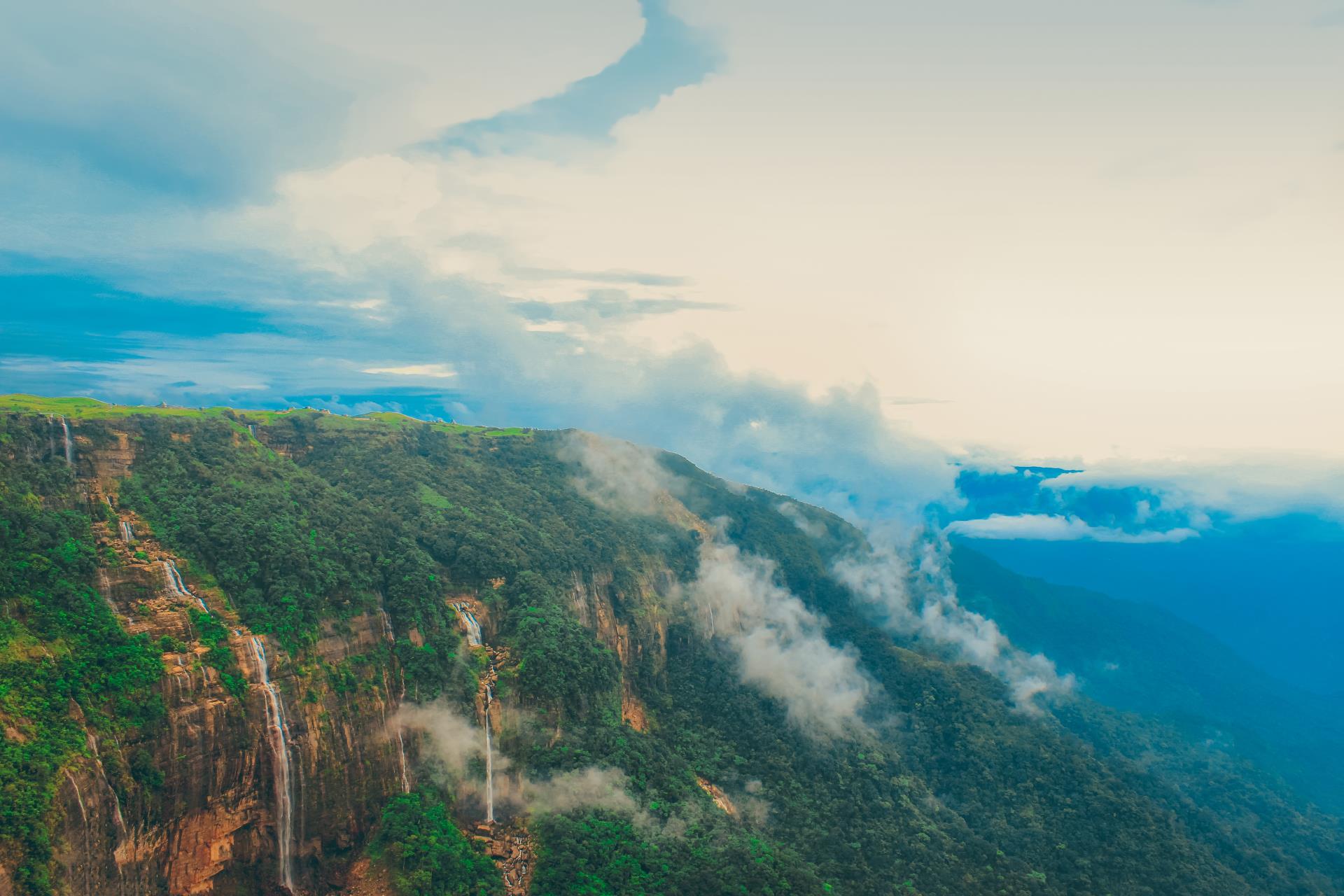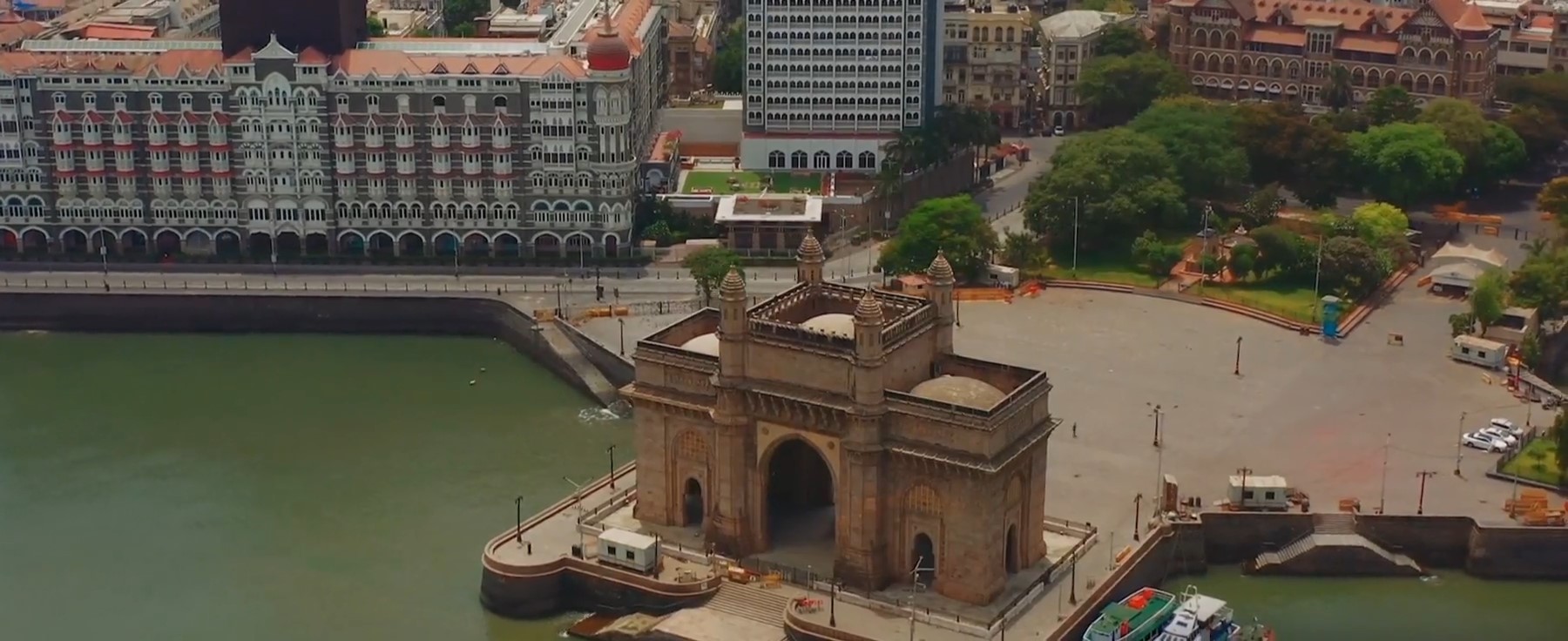
Sorry, we couldn't find anything that matches your search.
Destination

Famous Places to Explore in Hyderabad
A vibrant city with the imposing...

Raipur Tourist Places | Best Place to Visit
The stronghold of several erstwhile...

Ahmedabad
Declared as India's first UNESCO World...
#
 Start : Kolkata
Start : Kolkata
 End : Lachung
End : Lachung
 Time : 8 days
Time : 8 days
Day 1 : Arrive in Kolkata
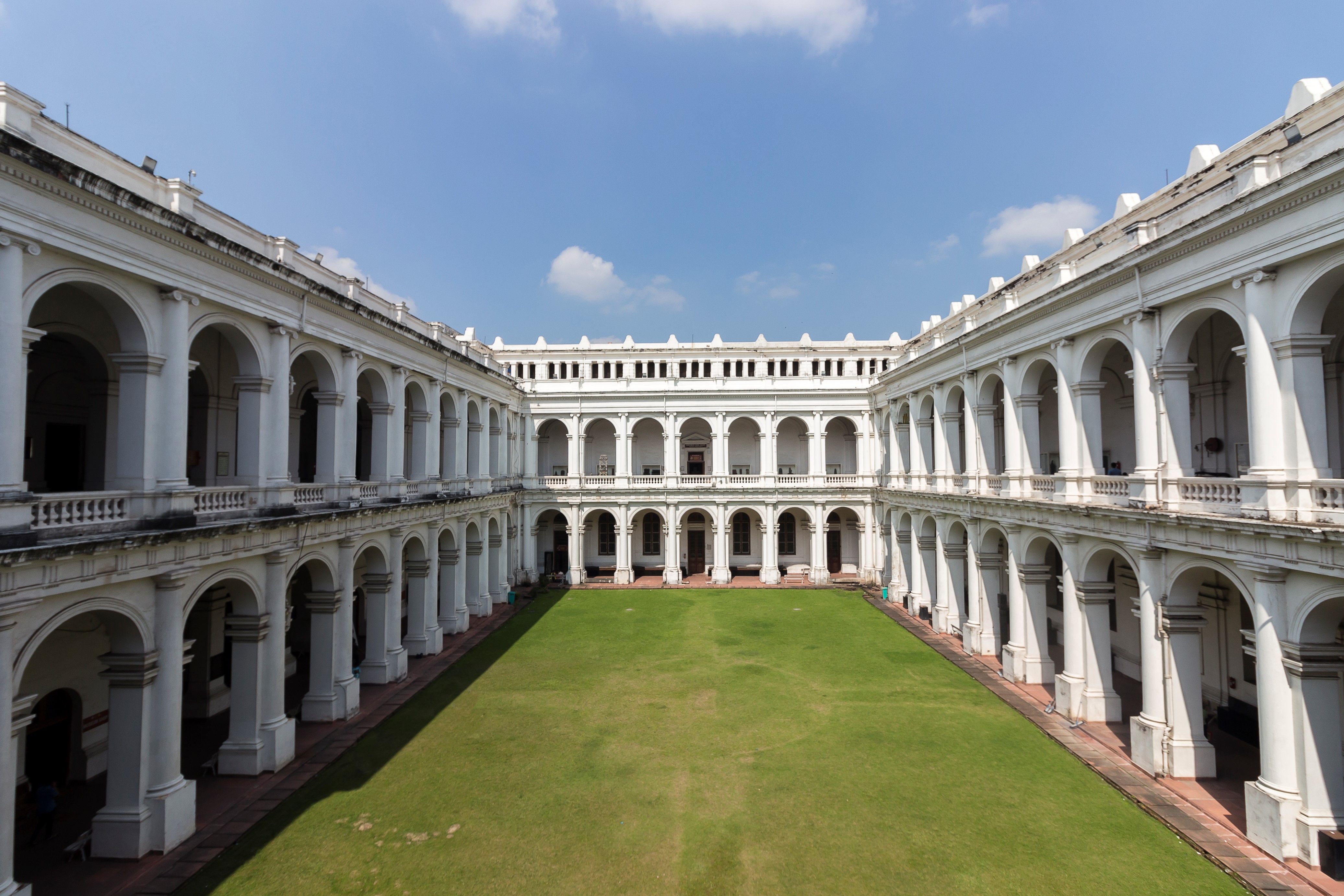
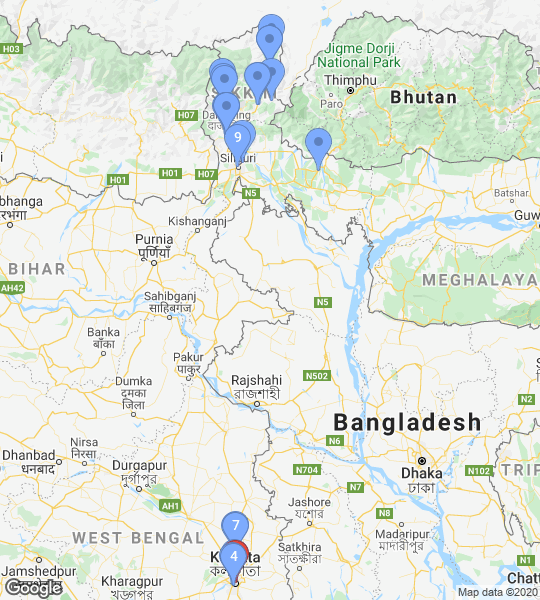
Begin your journey from the City of Joy, which is connected by road, flights and trains from most parts of the country and by air from several foreign countries. Arrive a day before to start exploring the city at the break of dawn the following day. If you have time after reaching the city, visit the Victoria Memorial and enjoy a horse-drawn carriage ride near the landmark.
Day 2 : Kolkata


Touted as the cultural capital of India, Kolkata once served as the capital of the British raj. Rooted in art and legacy, the city seamlessly weaves the past with the present, where colonial-era buildings rub shoulders with modern-day high-rises. A city where the heritage tram is still operational, Kolkata has many heritage delights to awe a visitor with.
Day 2 Stop 1: Morning: Malik Ghat flower market and Jorasako Thakur Bari


Experience the early morning vibe of the city at the Mallik Ghat Flower Market, said to be the biggest of its kind in Asia. Stop for an authentic Chinese breakfast spread at Tiretta Bazaar, said to be one of the oldest neighbourhoods in the city where the Chinese migrant community first settled in the late 18th century. Then move on to one of the most noted addresses in the city close by - Jorasako Thakur Bari, the ancestral home of Rabindranath Tagore.
Good to know:
The flower market is located near the Howrah Bridge and comes alive a few hours before sunrise. Shops at Tiretta bazar open as early as 5am.
What to do:
If you are fond of shopping, visit Bara Bazar (located in the vicinity), one of the largest wholesale markets in the city with designated areas for garments, electronic goods, food and spices.
Day 2 Stop 2 : Afternoon: Kolkata’s cultural heart
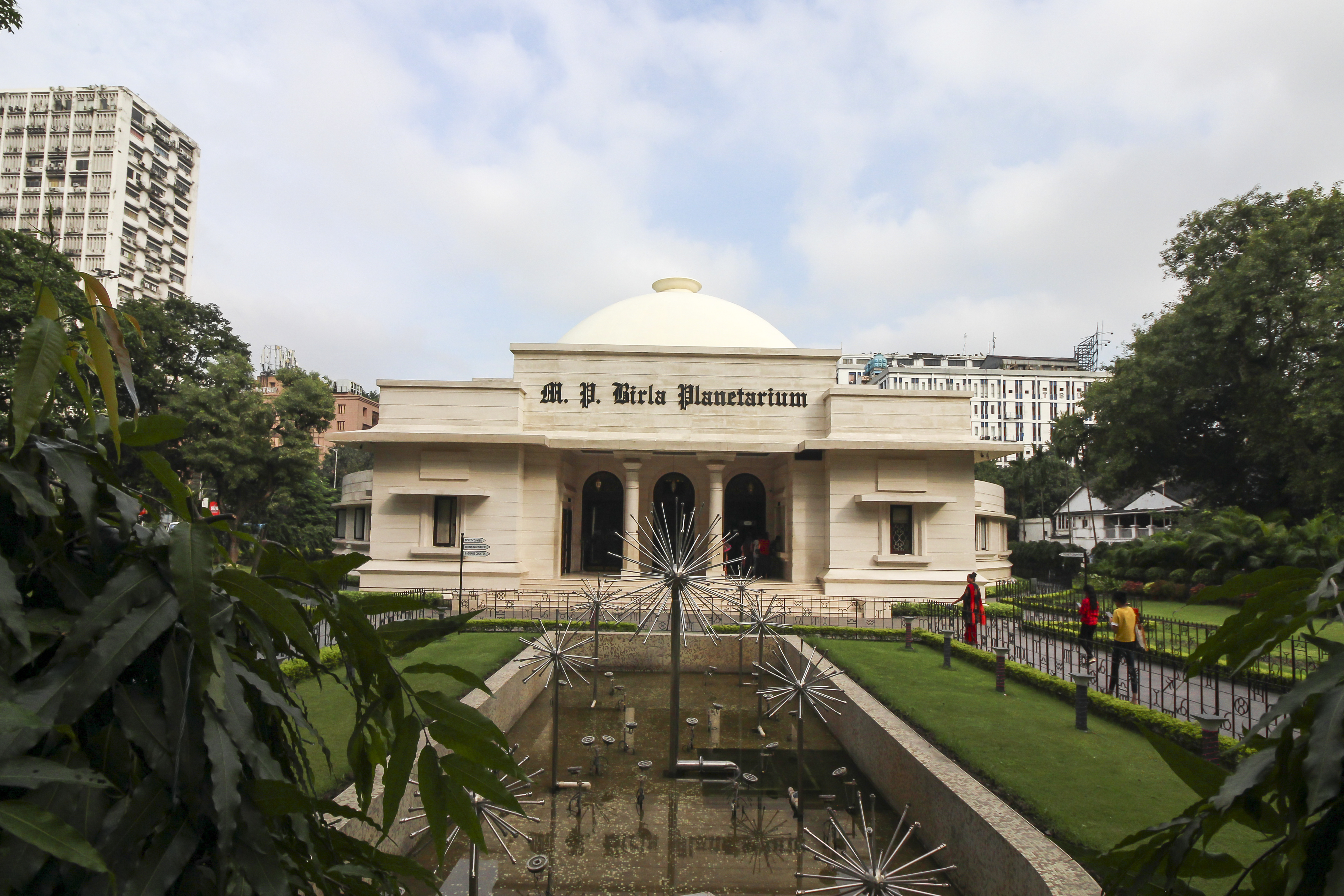
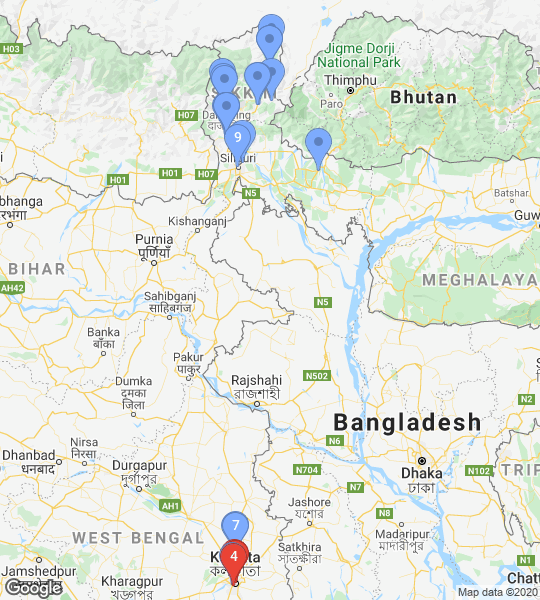
Hail the iconic yellow taxi and make your way to the Nehru Children’s Museum, stopping to explore the Indian Museum on the way. If you have time, drop by the children’s museum’s equally popular neighbours - Birla Planetarium, St Paul’s Cathedral, Academy of Fine Arts, Rabindra Sadan (a cultural centre and venue) and Nandan, a government-sponsored film and cultural centre.
Good to know:
Nandan hosts the annual Kolkata International Film Festival and the Birla Planetarium runs regular shows in English, Hindi and Bengali.
What to do:
For a glimpse of the city’s Anglo-Indian heritage, visit Bow Barracks, which falls on the way to the children’s museum.
Day 2 Stop 3 : Evening: Princep Ghat and boat ride
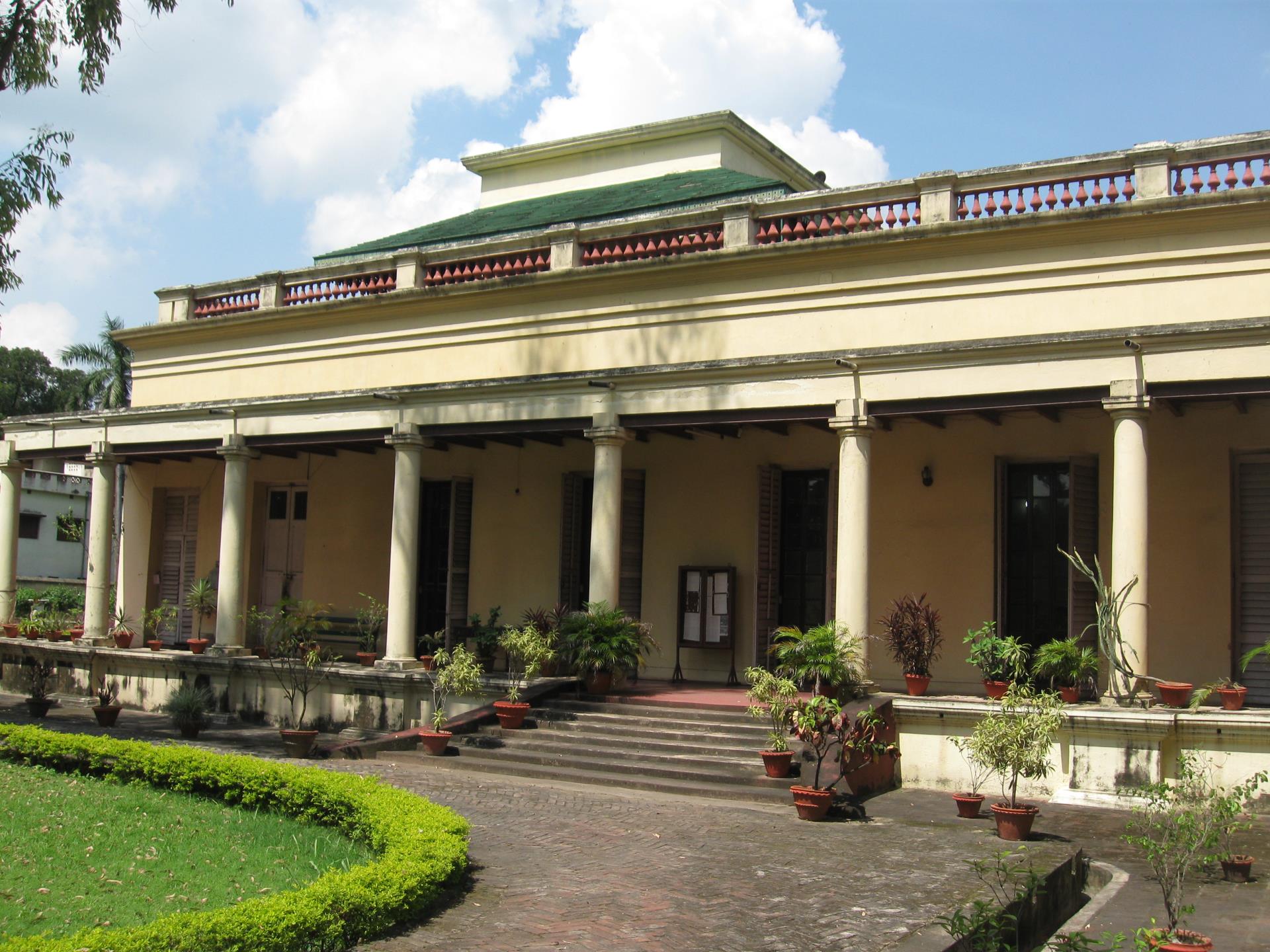
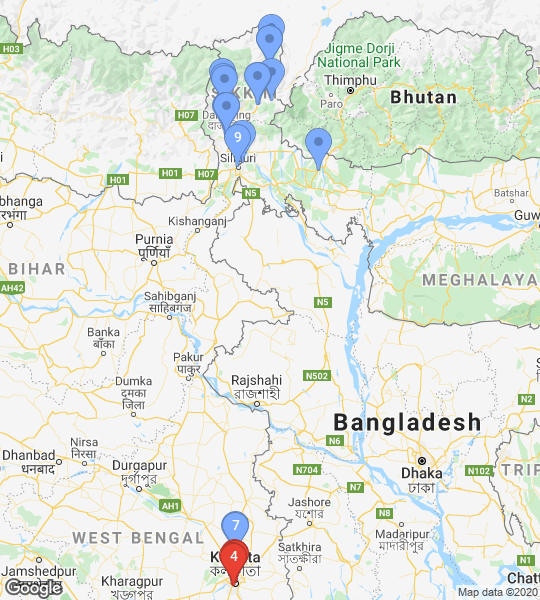
Visit Princep Ghat next. This British-era structure sits on the banks of River Hooghly with the Vidyasagar Setu stretching above it. Take a boat ride on the river from here during sunset. End your day on a devotional note at Kalighat Temple, one of the 51 shaktipeeths.
Good to know:
Princep Ghat is open 24/7 and is a popular shooting spot so do not be surprised if you come across an entertainment crew here
Travel tip:
Avail a metro from the ghat to the temple. You can also enjoy a short ride in a hand-pulled rickshaw that still operates around the temple.
Transfer to :
Transfer to Chandannagar, once a French colony
Transport mode:
train/ road
Time:
2 hours
Day 3 : Arrive in Chandannagar

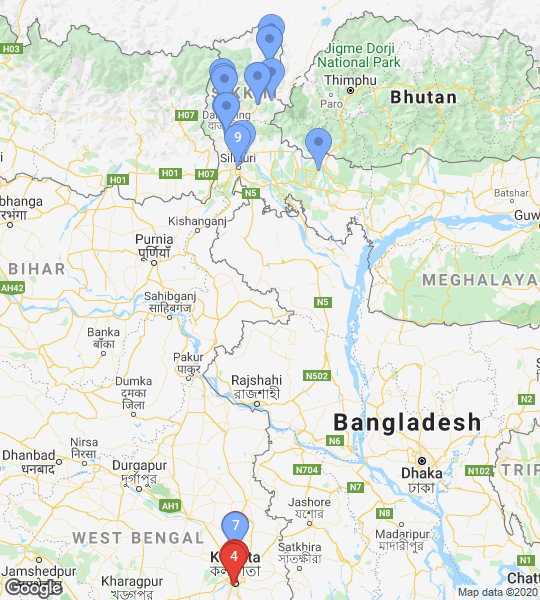
Chandannagar (colloquially called Chandernagor or Chondonnogor) was established as a French colony in 1637. The French left such an indelible impression here that many schools here teach French as a third language.
Day 3 Stop 1: Morning: Dupleix Palace

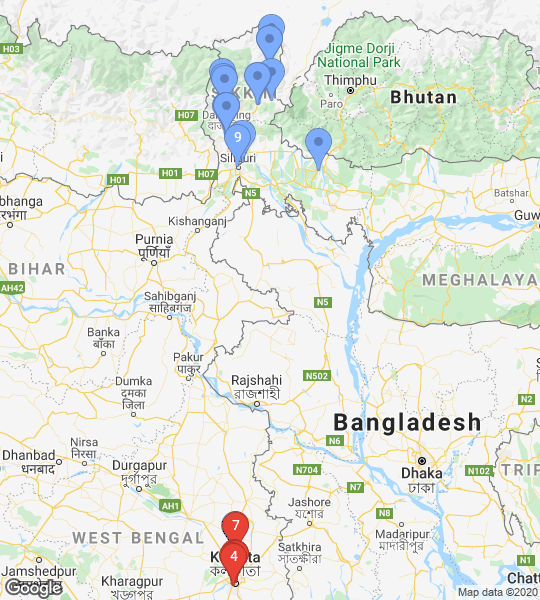
The former residence of Francois Dupleix, the then governor of French India, it has been converted to Institut de Chandernagor, an Indo-French Cultural Centre housing one of the oldest museums in West Bengal.
Good to know:
The museum displays a rare collection of French antiques including cannons used in the Anglo French wars, personal belongings of French officials and such 18th century wooden furniture as heritage four-poster beds and sofas along with other remnants of Chandannagar’s French colonial history.
Travel tip:
Visit Patal Bari (underground house) in front of the museum. Although not related to the town’s colonial history, this house intrigues visitors as one portion of it is submerged by the Hooghly river.
Day 3 Stop 2: Evening: Strand and Durgacharan Rakshit Ghat

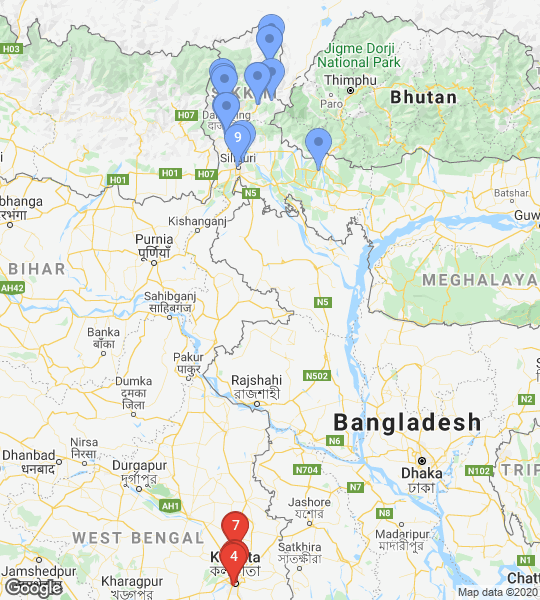
A kilometre-long sprawling promenade along River Hooghly called Strand is the pride and joy of Chandannagar. And its crowning jewel is the Durgacharan Rakshit Ghat. An elegant pavilion with slender columns boasting beautiful stucco works, this ghat was built in honour of Durgacharan Rakshit, a recipient of Légion d’honneur, the highest honour bestowed by the French Government.
Good to know:
A stroll along the Strand and spending some leisurely time at the ghat’s shaded sitting area is one of the best experiences to be had here.
What to do:
Two more French heritage structures lie along the Strand - the French Fort, a multi-columned red-stone building, which currently serves as the courthouse, and the beautiful twin-towered Sacred Heart Church that boasts impressive stained glass work.
Return to Kolkata and transfer to Siliguri:
Try to catch a night bus (sleeper ones with air conditioning) from Esplanade bus station or a night train from either Howrah or Sealdah railway stations to New Jalpaiguri Railway station.
Transport mode:
Road/train
Time:
12 hours (bus), 10 hours (train)
Day 4: Arrive in Siliguri

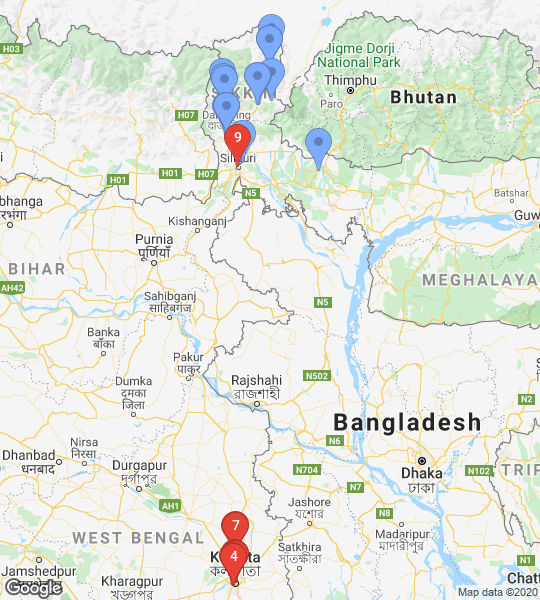
Situated in the foothills of the Himalayan ranges along the Mahananda river, Siliguri is West Bengal’s second largest city. Flanked by the Mahananda Wildlife Sanctuary and the Baikanthapur Forest, Siliguri enjoys a considerably cooler climate than the southern and central regions of the state.
Day 4 Stop 1: Morning: Safari at Jaldapara National Park
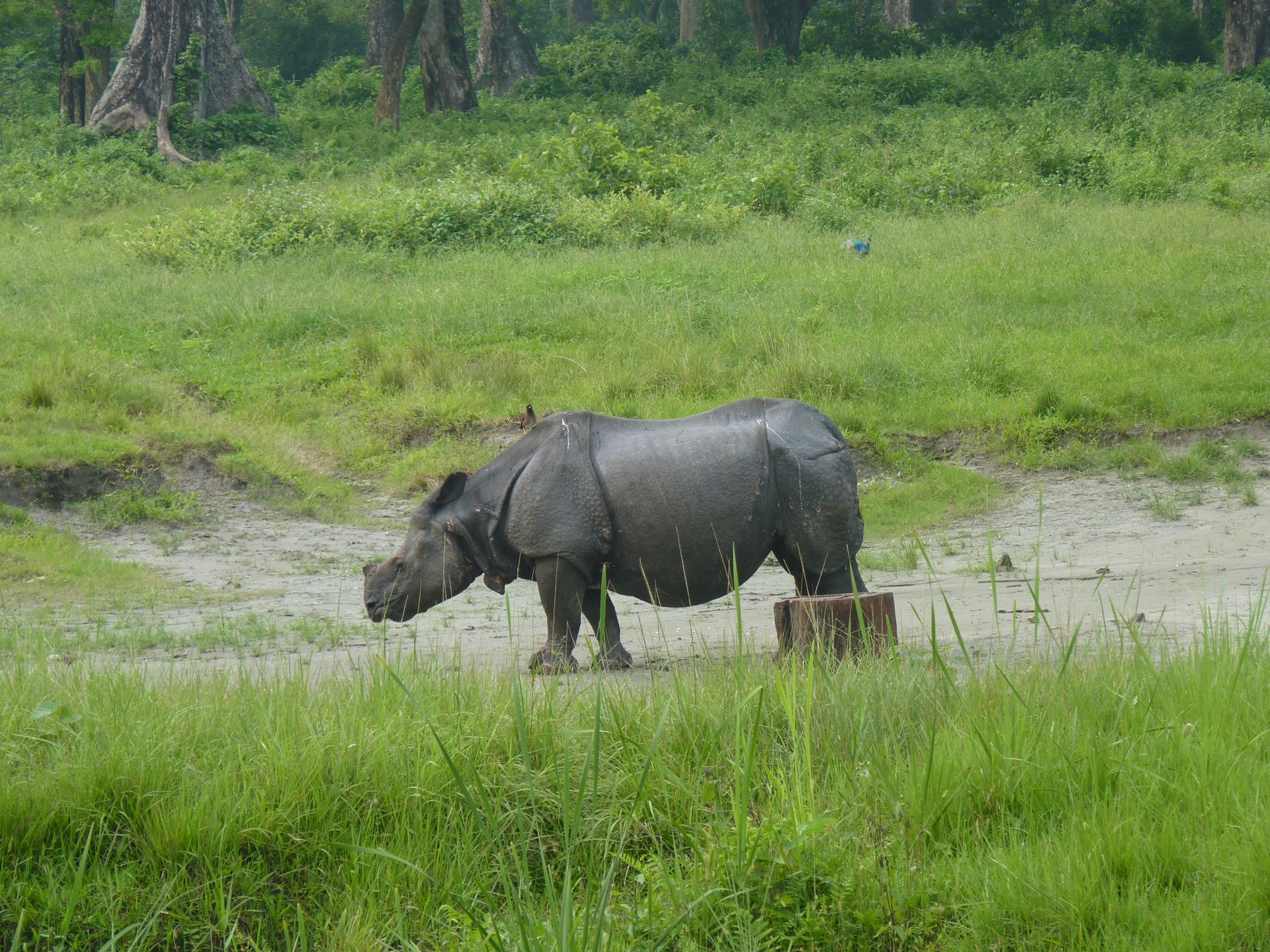
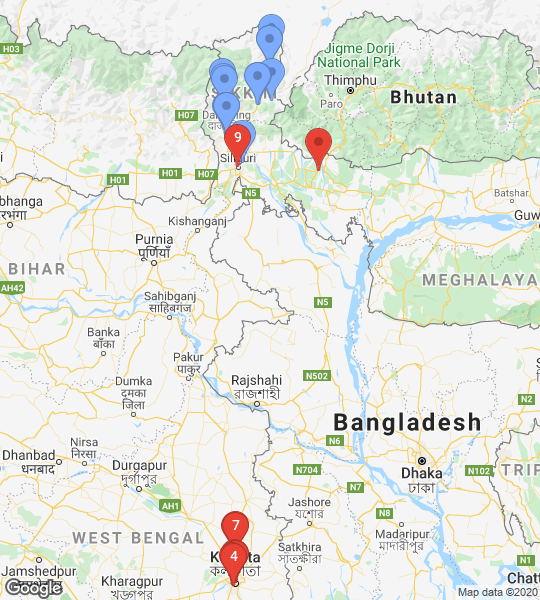
An elephant safari will allow you to explore the varied flora and fauna of this national park (a three-hour drive from Siliguri), whose most famous inhabitants are the Asiatic one-horned rhinoceros. You can also opt for a 4x4 jeep safari from Madarihat Jaldapara Tourist Lodge and Kodalbasti Point on the way to Chilapata range.
Good to know:
Jeep and elephant safaris are the only ways to go around the national park. While jeeps ply throughout the day, elephant rides are conducted only in the morning from the Hollong Tourist Lodge.
What to see:
Spot such varied wildlife as Bengal florican (Bengal bustard, Pallas's fishing eagle, several species of deer like barking, spotted and hog, bisons and tigers.
Day 4 Stop 2 : Afternoon: Salugara Monastery

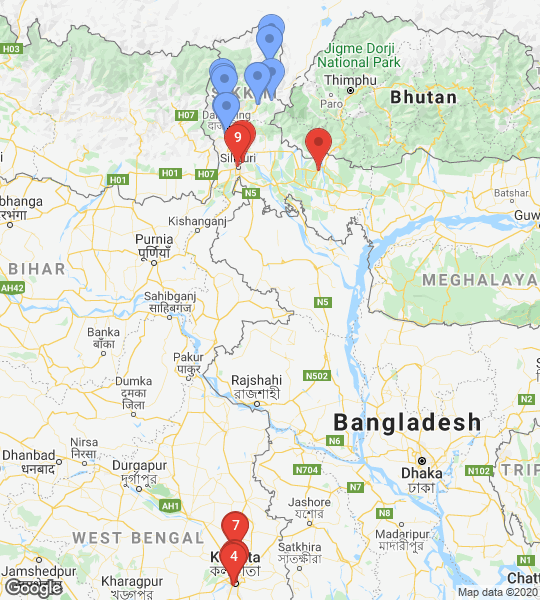
On your way back to Siliguri, stop by the small town of Salugara and visit its eponymous monastery, which was built by Tibetan Buddhist monks and followers of the Dalai Lama. Also known as the Great International Tashi Gomang Stupa, it is surrounded by verdant forests and rolling hills.
Good to know:
This monastery is said to be the main seat of the whispered lineage (or tantrik Sed-Gyued) of Tibetan Buddhism.
What to do:
Take a walk in the landscaped gardens around the monastery.
Transfer to :
Transfer to Darjeeling to explore its heritage and natural wonders.
Transport mode:
Road
Time:
3 hours (approximately)
Day 5 : Arrive in Darjeeling

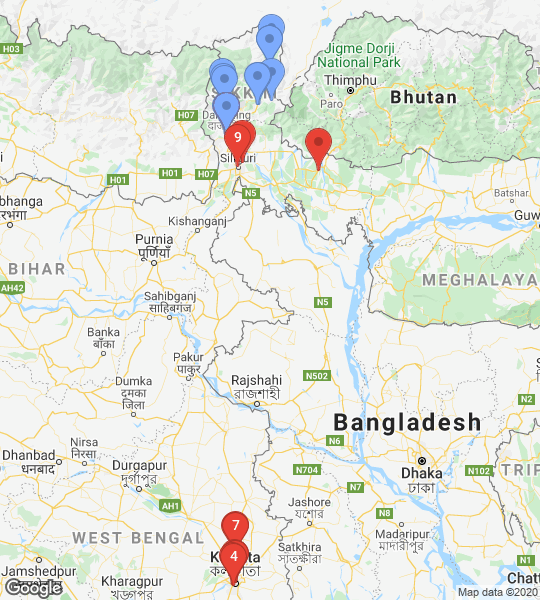
Called the Queen of Hill Stations, Darjeeling, with its expansive rolling hills dotted with rhododendrons, aromatic tea estates, dense forests of silver fir and spectacular views of Mt Kanchenjunga (or Khangchendzonga), the third-highest peak in the world, is one of the crowning glories of north Bengal. This coupled with the myriad cultures of the such ethnic communities that call this hill station home, makes it one of the most popular destinations in the state. Once a much-favoured summer retreat for British officials, the city today marches with the advancements of the present day while preserving the vestiges of its colonial past.
Day 5 Stop 1: Morning: Joy ride
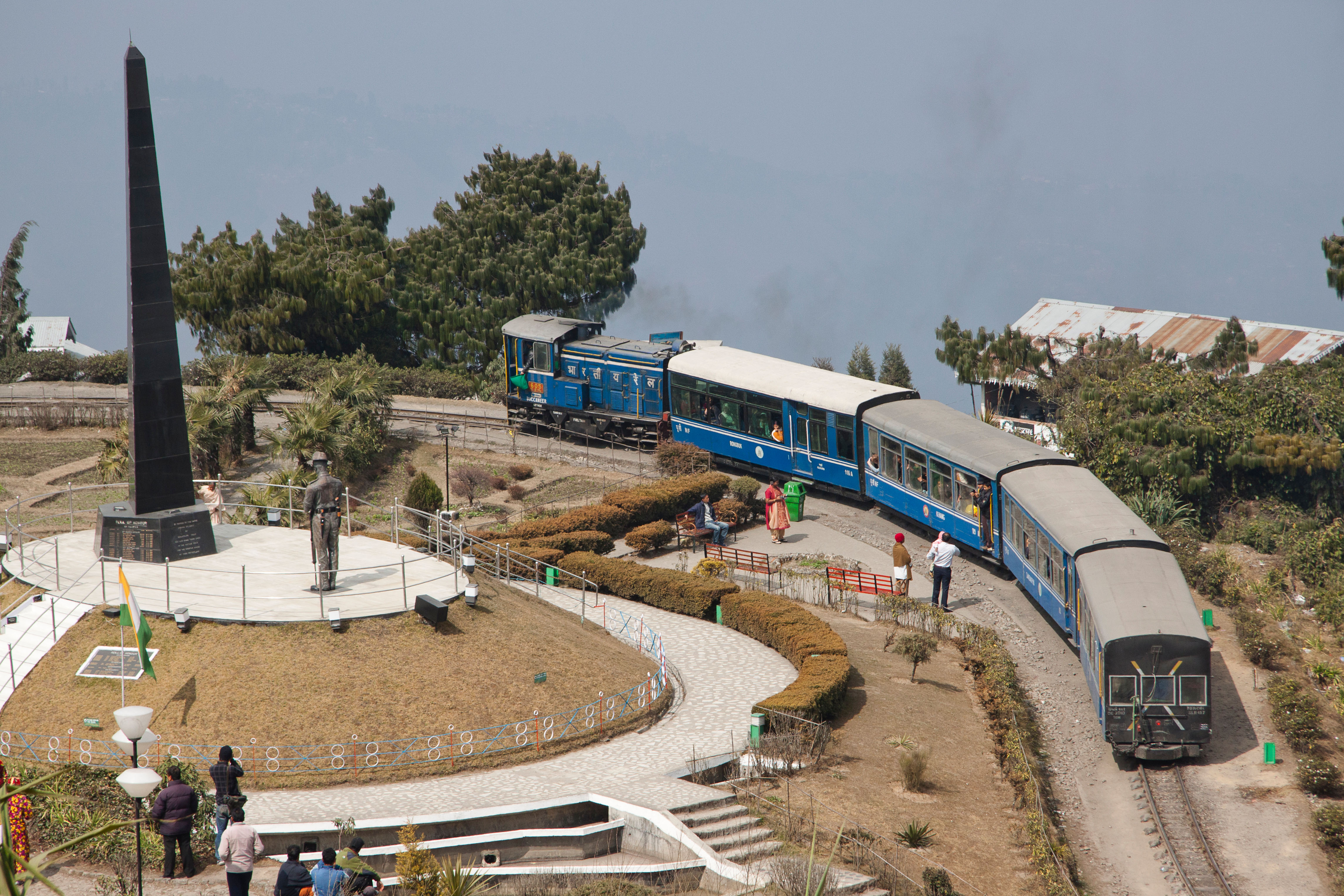

Take a journey on the historic Darjeeling Himalayan Railways (DHR), a UNESCO World Heritage Site. This joy ride will take you round Batasia Loop and upto Ghoom (Ghum), where you can visit the Ghoom Monastery and the DHR Railway Museum.
Good to know:
The train is powered by a 1881 heritage steam locomotive and stops at Batasia Loop for 10 minutes.
Travel Tip:
Carry light woolens as temperature tends to drop as the train gains height.
Day 5 Stop 2 : Afternoon: Lloyd Botanical Garden
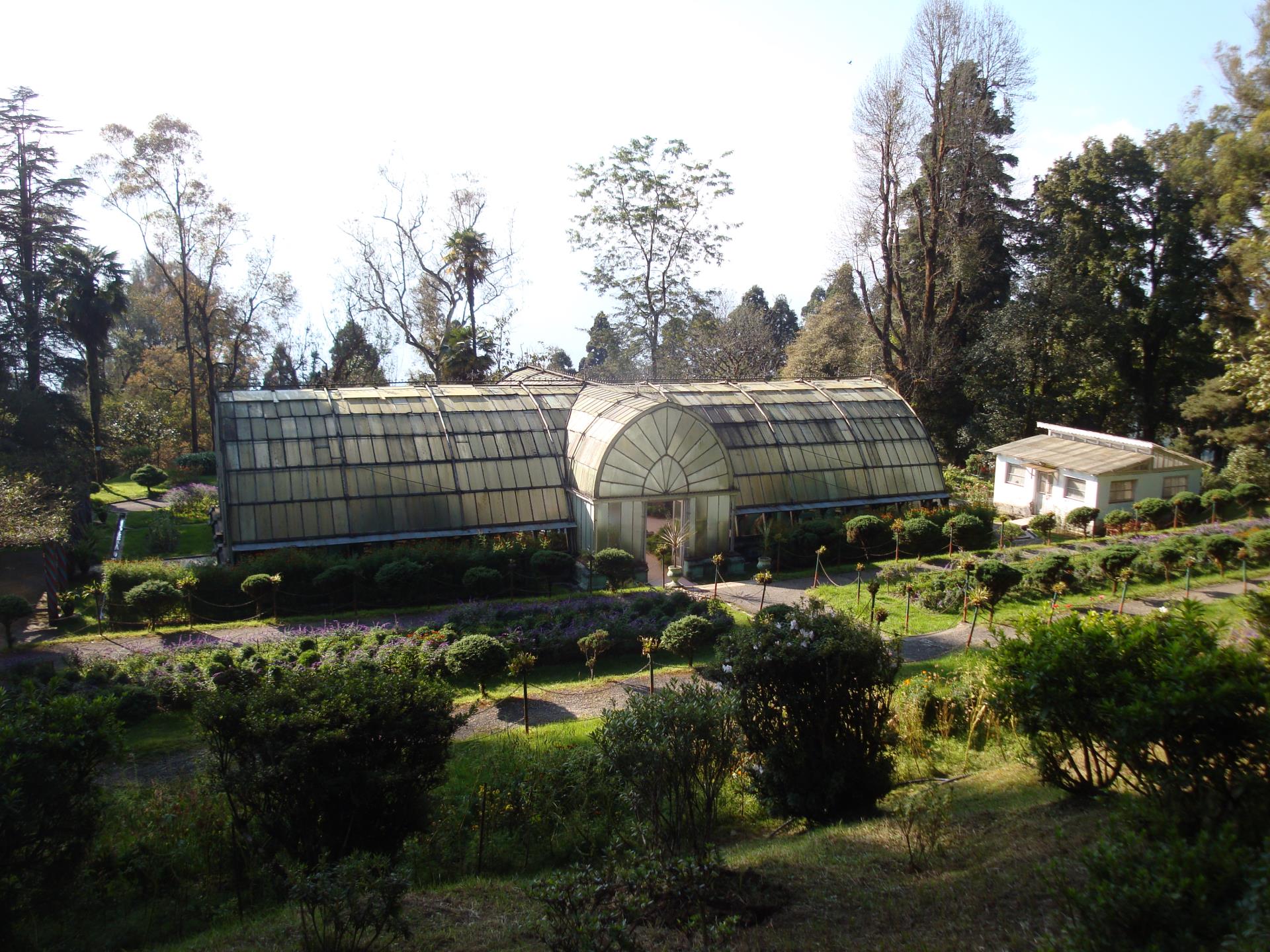
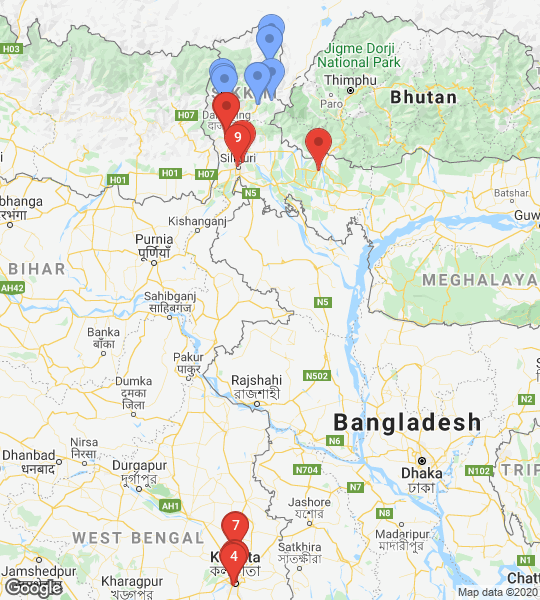
Boasting an astounding collection of alpine plants, arum lilies and lilacs from China and Japan, this 40-acre garden also houses a medical garden and a rock garden. Explore several species of plants and trees including weeping willows, cypress, as many as 50 rare varieties of orchids, geraniums and more.
Good to know:
Established in 1878 on the lines of the botanical garden in Kolkata, this garden is open everyday from 6 am to 5 pm.
Travel tip:
Do not miss out on a visit to one of the numerous tea gardens that dot this hill station. The Happy Valley Tea Estate, located a stone’s throw from the garden, is one of the most popular here. It offers a guided tour and gives you an opportunity to visit its factory. Note that the estate is closed between November and February as tea leaves are not plucked during this time. Cross the Indo-Sikkim border and arrive at Pelling.
Transport mode:
Road
Time:
Approximately 3 hours
Day 6 : Arrive in Pelling

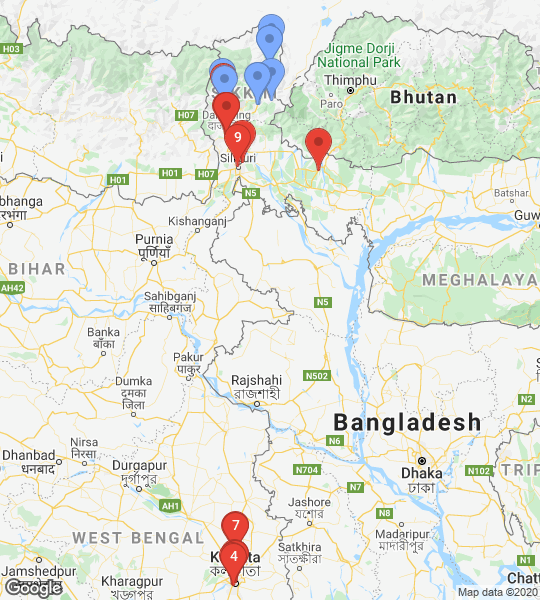
A haven for adventure seekers, especially trekkers, Pelling offers some of the best views of Mt Khangchendzonga. Explore beyond the town’s mishmash of accommodations and you’ll discover a serene lake, beautiful monasteries, a quaint village, a cascading waterfall and other natural delights.
Day 6 Stop 1: Morning: Pemayangtse Monastery
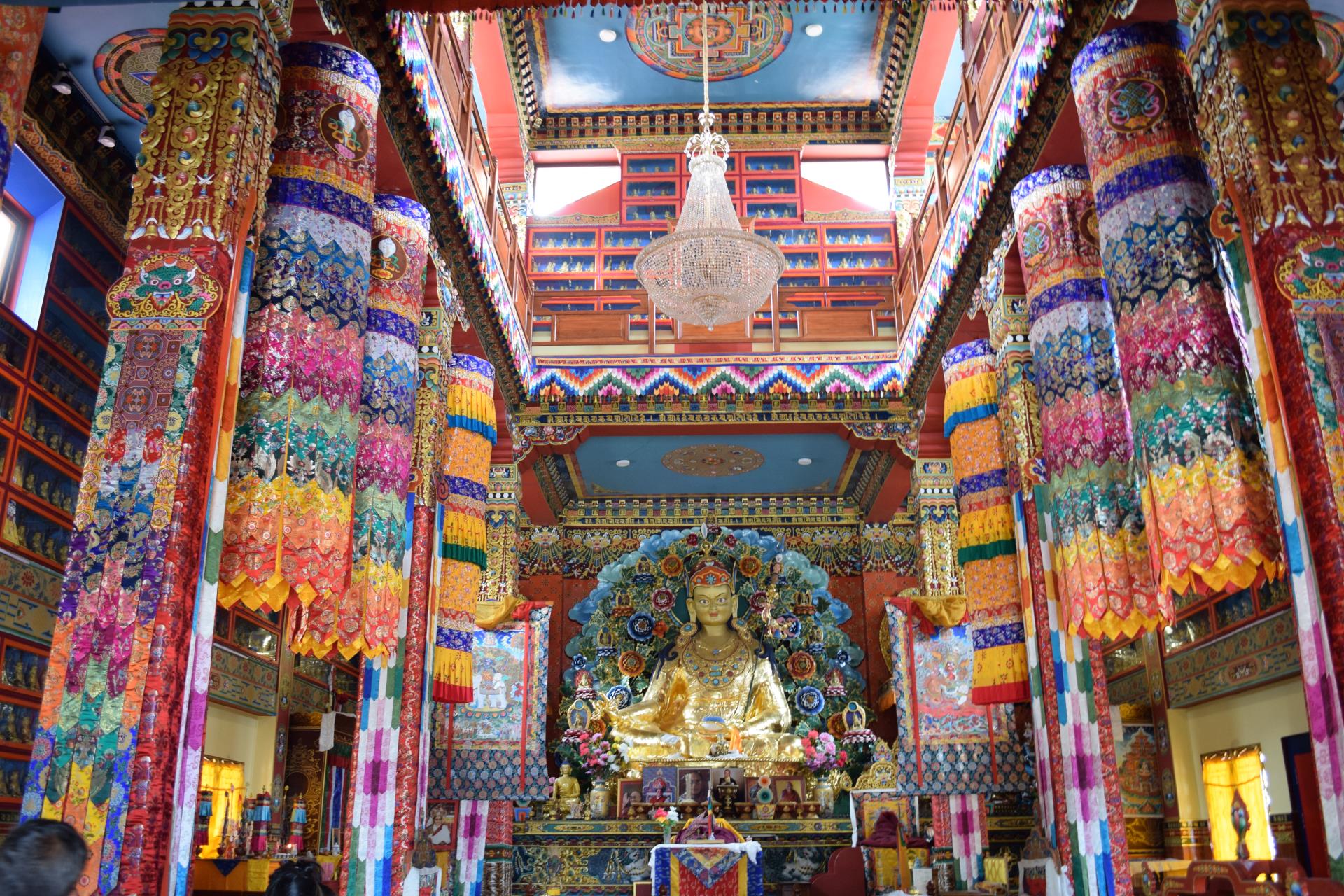
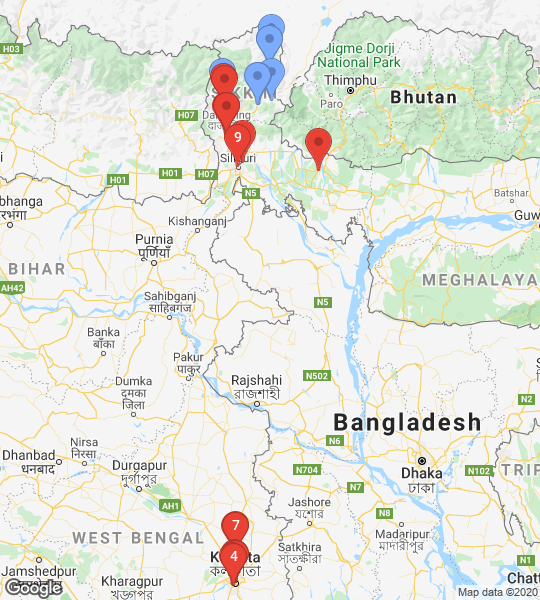
Located barely a kilometre from Pelling, this monastery is said to be one of Sikkim’s oldest and premier Nyingma monasteries and offers commanding views of the Khangchendzonga range. Explore the exquisite thangka paintings and statues housed here.
Good to know:
The monastery (open from 6 am to 6 pm) houses Sangtok- Palri, an exquisite three-dimensional model of a celestial city painted on wood.
What to do:
Take a hike on the hill facing the monastery to reach Sanga-Choling monastery. Established in 1697, it is touted to be the oldest in the state.
Day 6 Stop 2: Afternoon: Yuksom
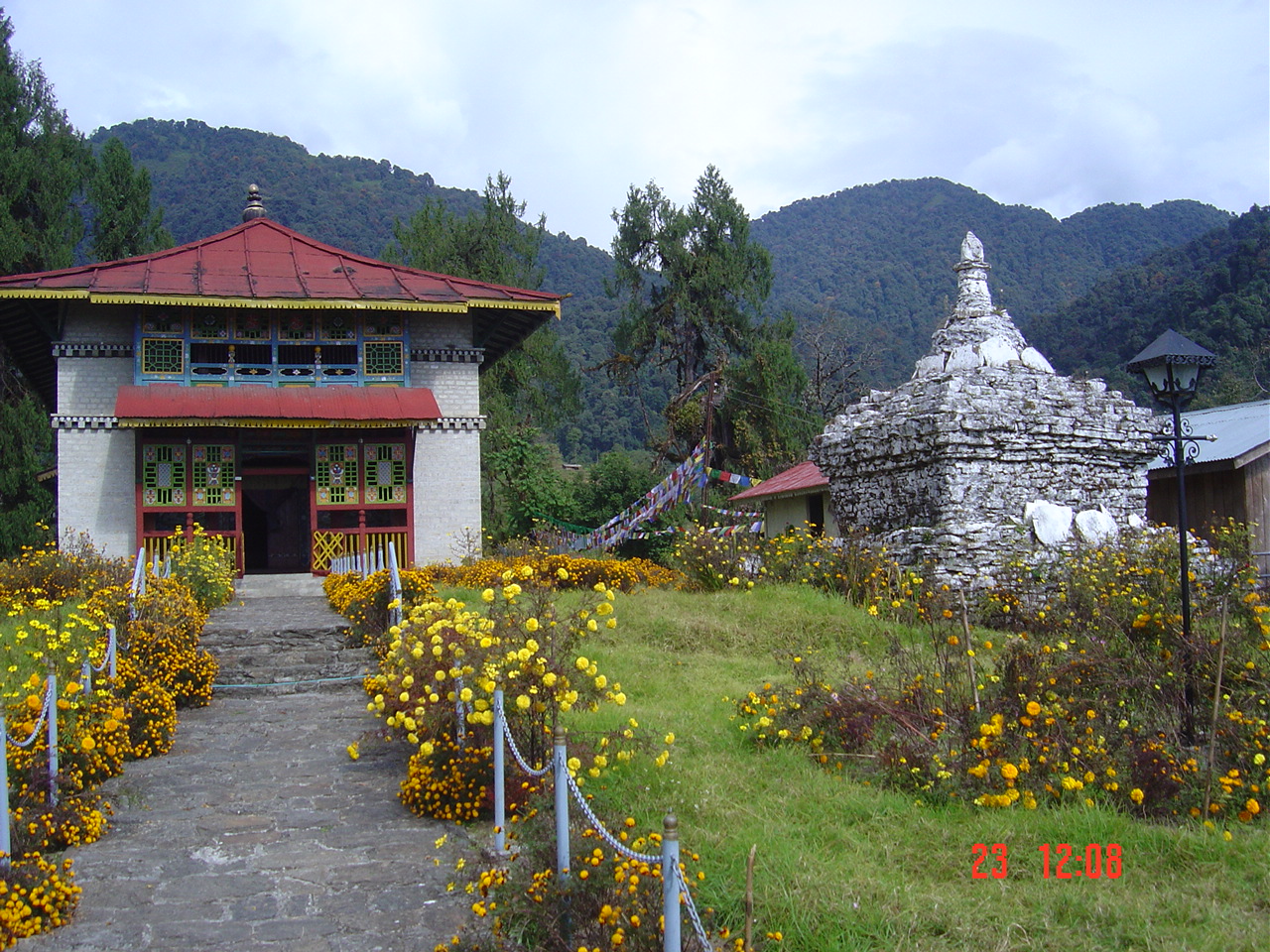
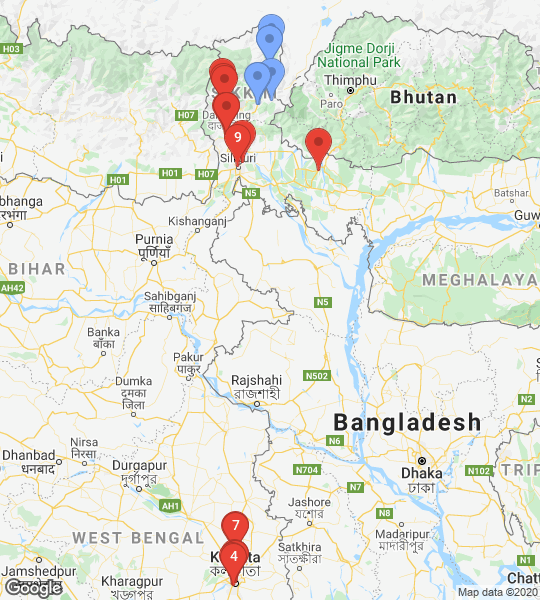
Make your way to Yuksom, about 1.5 hours away. The gateway to the Khangchendzonga Biosphere Reserve and the base for the Dzongri Goecha La trek, Yuksum is also the historic site where the first king of Sikkim was crowned in the mid-17th century
Good to know:
Stop by the picturesque Darap Cherny Village on the way. An up and coming homestay destination, it offers an authentic experience of the Sikkimese way of life. On the way, you’ll also pass Rimbi waterfalls.
What to see:
Visit the Dubdi Monastery, a two kilometre uphill trek from Yuksom. Declared a National Monument it is protected by the Archaeological Survey of India. Perched on a hilltop, it is surrounded by verdant forests and is frequented by lamas for meditation.
Return to :
Return to Pelling and move on to state capital Gangtok.
Transport mode:
Road
Time:
4.5 hours (approximately)
Day 7 : Arrive in Gangtok

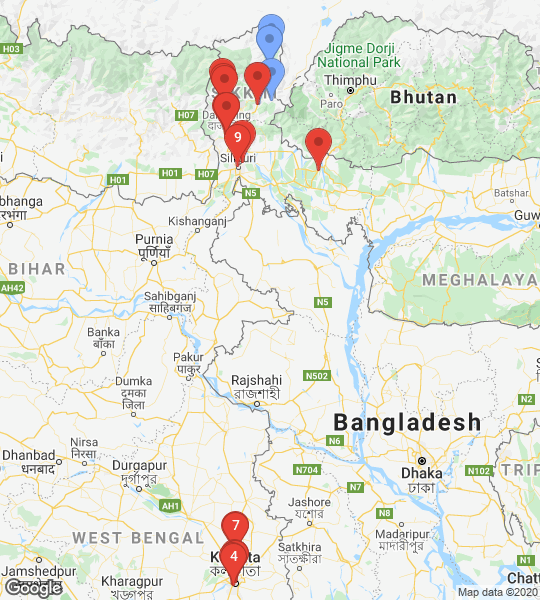
The largest city in Sikkim, Gangtok once served as an important transit point for travellers between India and Tibet. Today, it is a cosmopolitan town with the country’s first litter and spit-free zone, and acts as the perfect base for travelling around the state. It is one of Sikkim’s most popular destinations owing to the numerous historic, religious and natural attractions close by..
Day 7 Stop 1: Morning: Enchey Monastery
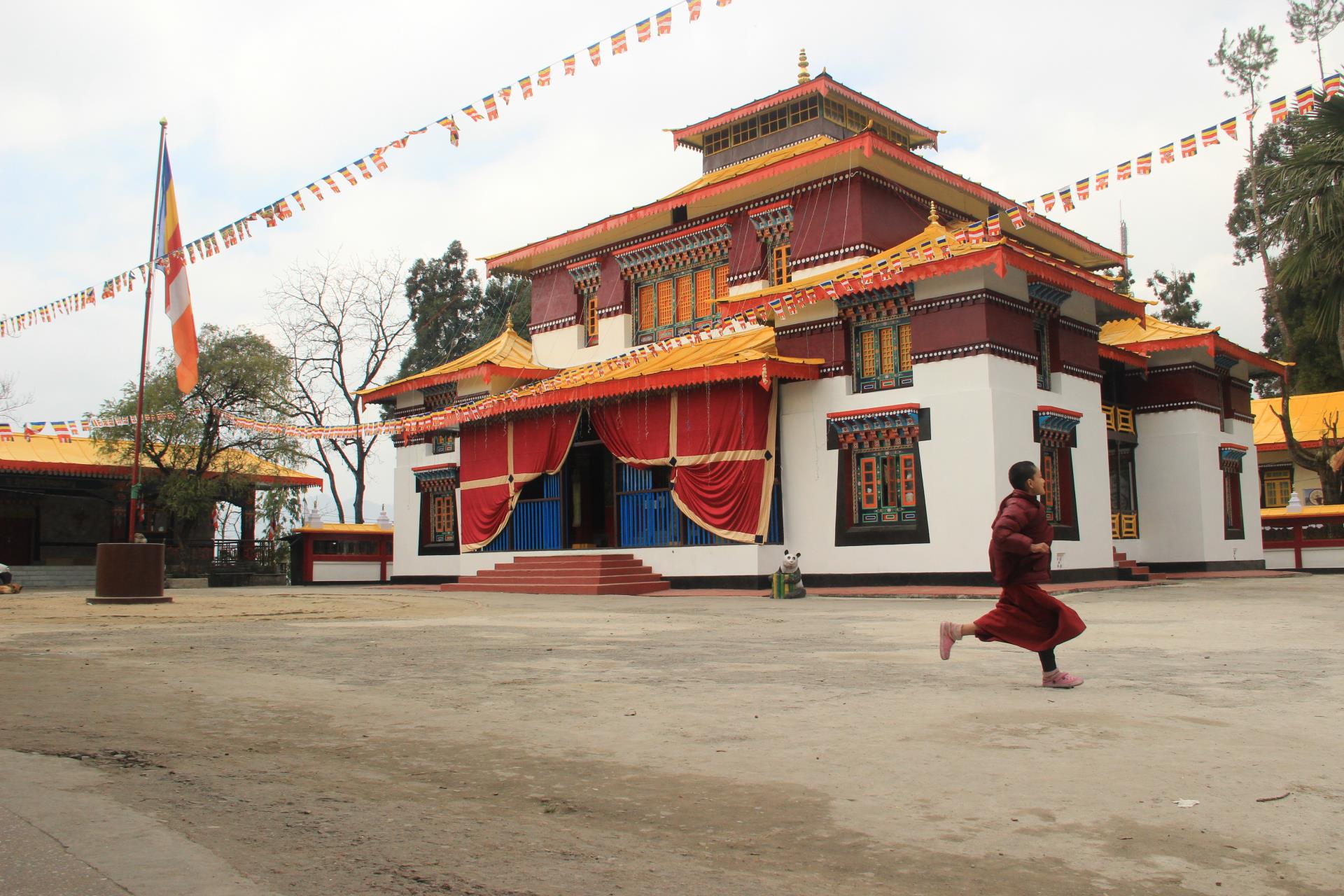
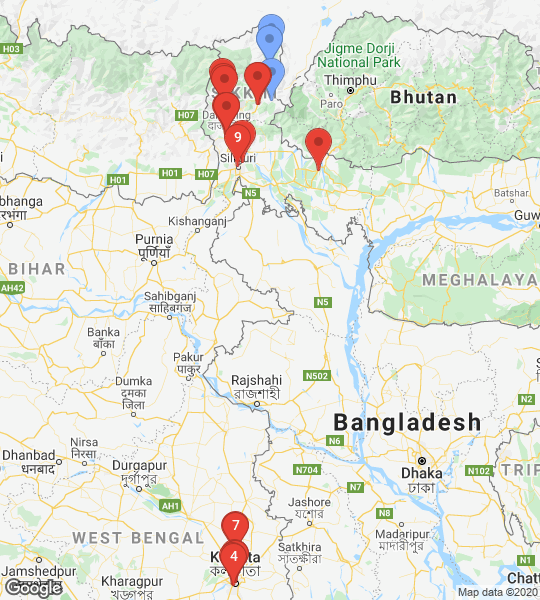
Perched on a hilltop about 10 minutes from the city centre, this is a 200-year-old monastery where Lord Buddha and Guru Padmasambhava are worshipped.
Good to know:
It is the norm to circumvent the monastery in a clockwise direction. The use of mobile phones, touching of artefacts and holy objects, and eatables are discouraged in the premises.
What to see:
The spacious multi-coloured prayer hall that boasts intricately-carved pillars and stunning Buddhist murals
Day 7 Stop 2: Afternoon: Tsomgo (Changu) Lake
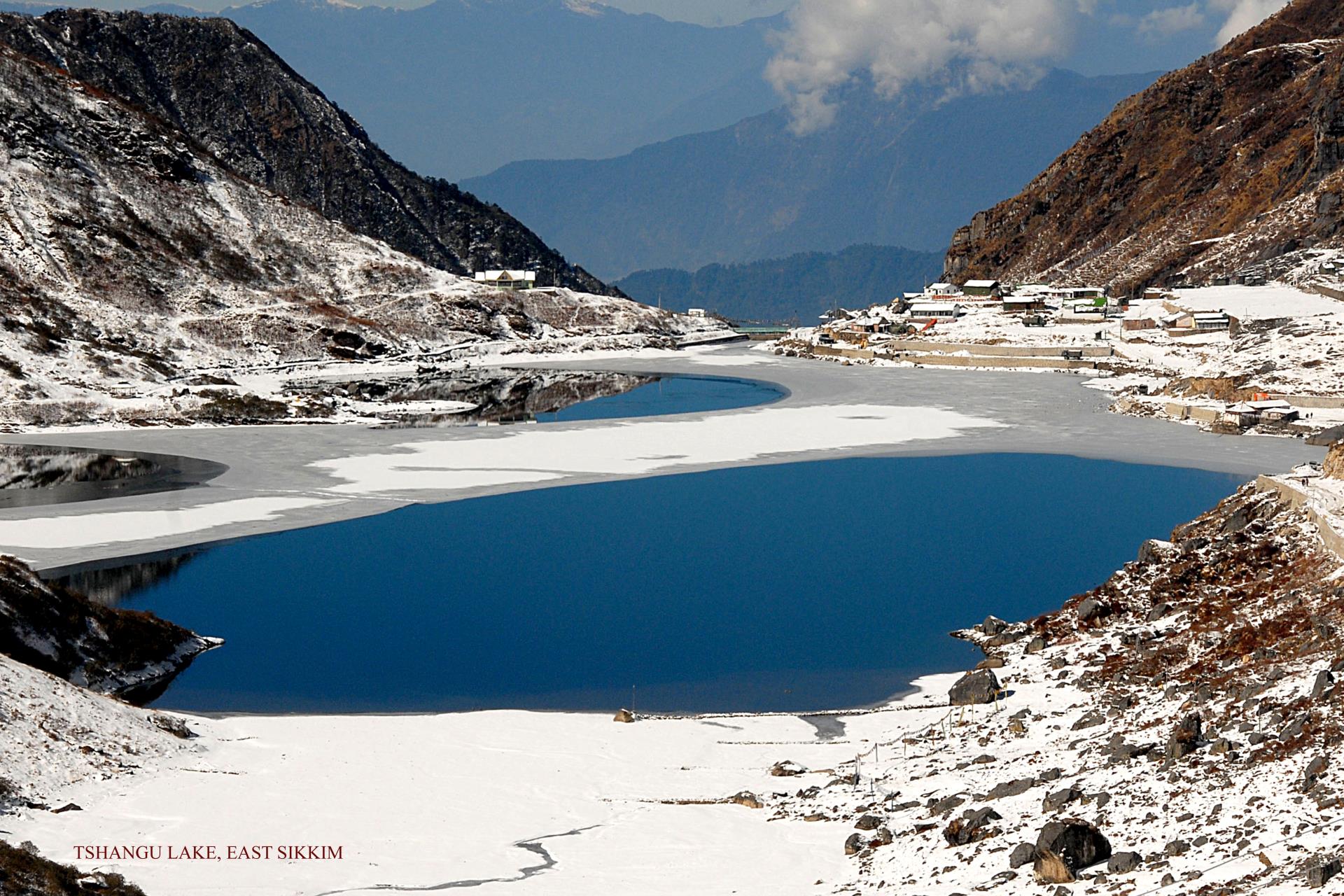
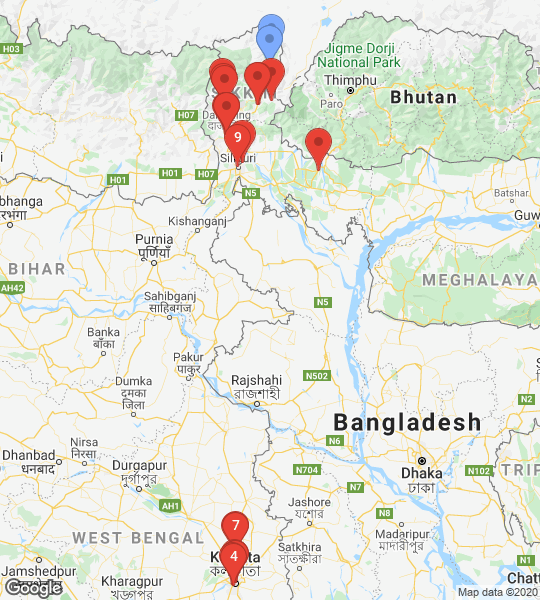
Traverse a rugged high-altitude terrain with winding roads and steep cliffs to arrive at Tsomgo Lake. Fed by the melting snow from the surrounding mountains, this waterbody is highly revered by the locals. The appearance of the lake changes with seasons. While it remains frozen during winter, it offers a pretty sight with the blossoming of flowers around it during spring.
Good to Know:
Indian and foreign visitors have to be in groups of two or more and need to acquire visitors permit through a registered travel agency.
What to do:
Take a ride on the 14,500-ft-high ropeway near the site that operates between 8 am and 3 pm. Tickets are available at the Tsomgo Lake.
Travel To:
Drive back to Gangtok and travel to Lachung to discover nature at its finest.
Transport mode:
Road
Time:
4 hours
Day 8 : Arrive in Lachung

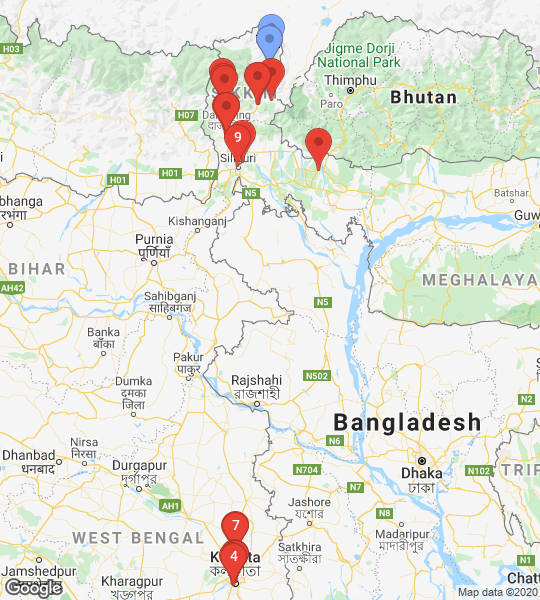
Situated along the banks of the Lachung Chu river, this lesser-known quaint village lies at a height of 8,610 m nestled amidst lofty peaks and dotted with cascading waterfalls, gurgling streams and numerous apple orchards. It is also an ideal halt for visitors travelling to Yumthang from Gangtok.
Day 8 Stop 1: Morning: Lachung Monastery
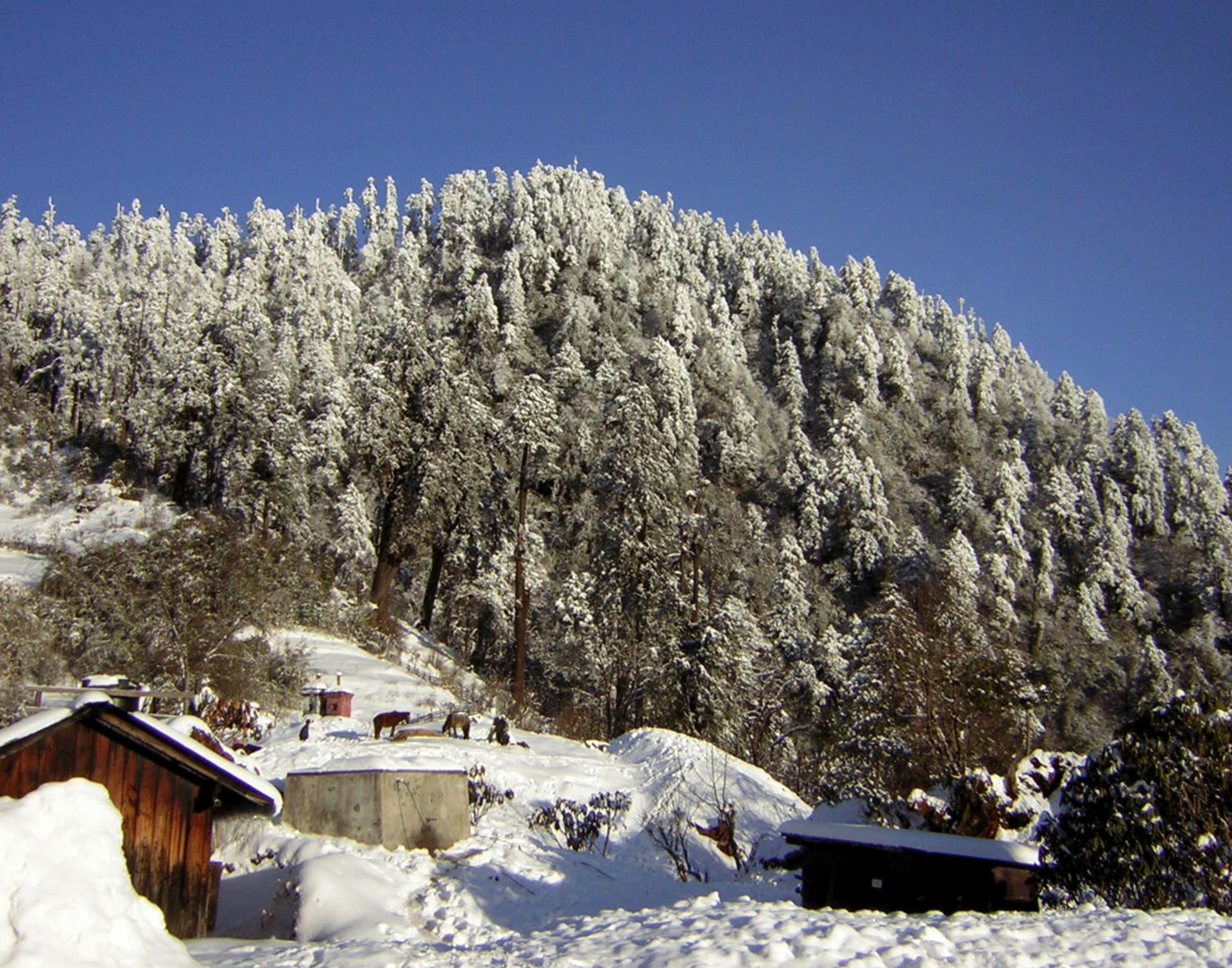
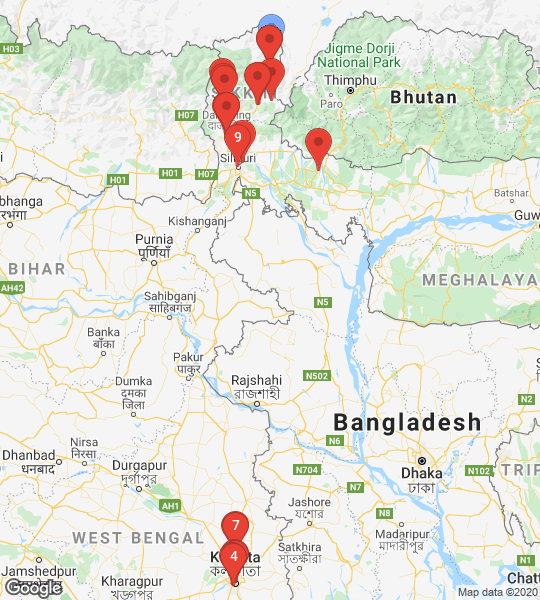
Located at a walking distance from the town centre, this monastery can be reached by crossing the Lachung Chu river. What the monastery lacks in size, it makes up with its colourful eye-catching structure.
Good to know:
The five colours of the Buddhist flags are associated with the five elements. Blue stands for space, white for air, red for fire, green for water and yellow for earth.
What to do:
Offer prayers at the two prayer wheels placed at the porch of the monastery.
Day 8 Stop 2 : Afternoon: Shingba Rhododendron Sanctuary
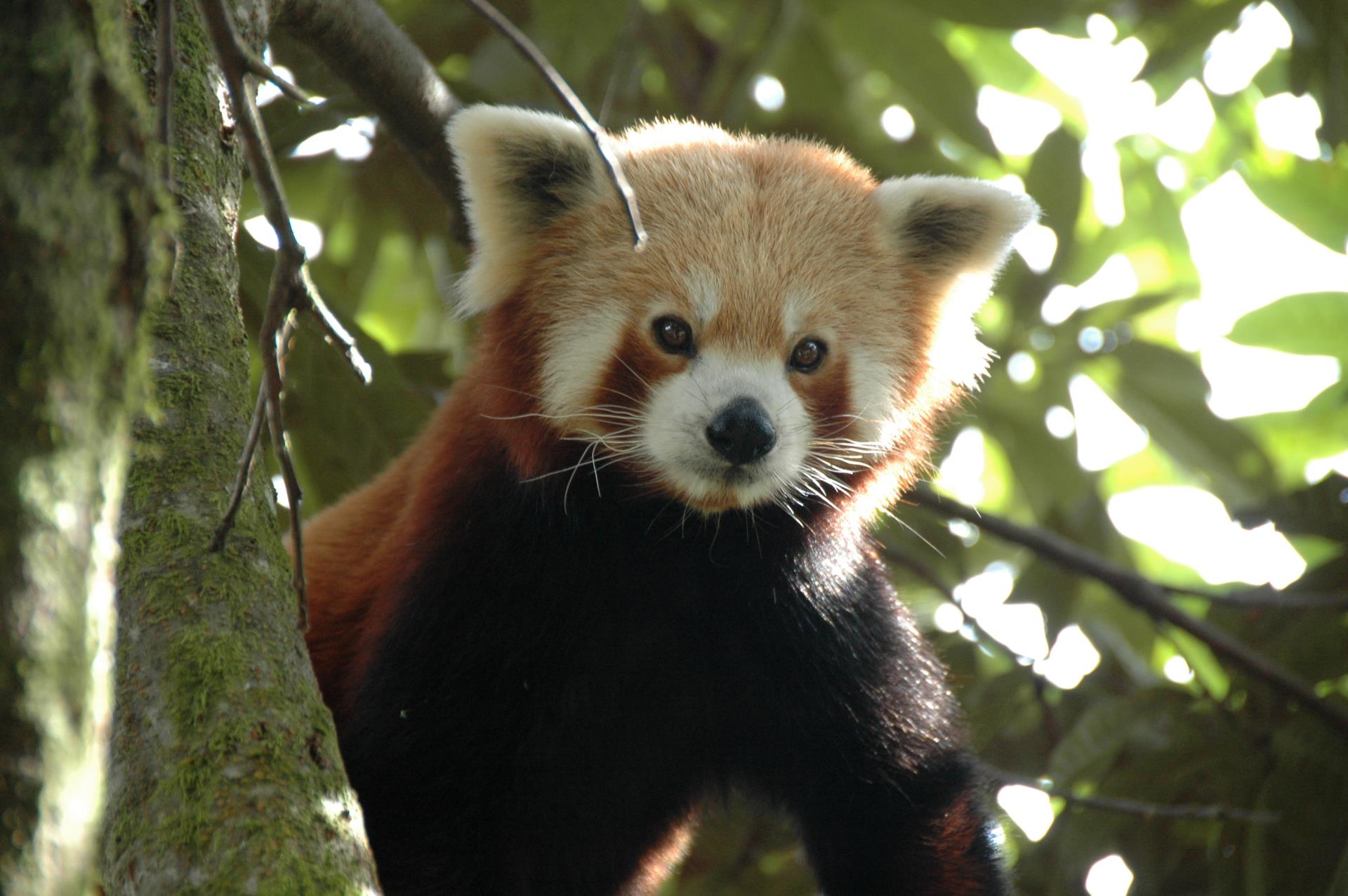
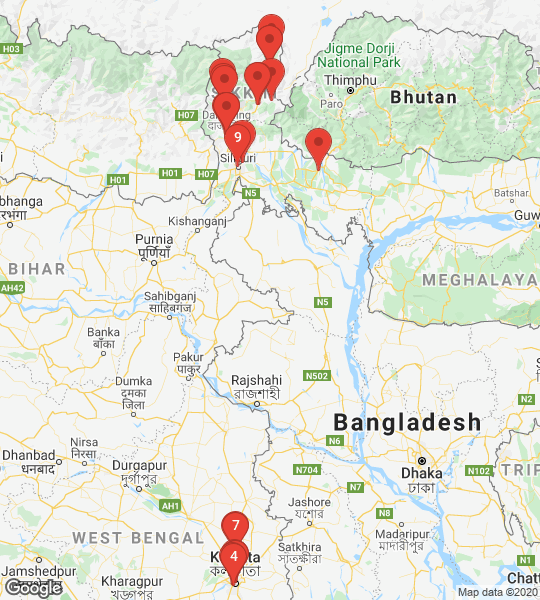
Located close to the Yumthang valley, this green land spread over 43 sq km houses as many as 40 species of rhododendrons along with a variety of flowering plants, including primulas, poppies and gentians.
Good to know:
Entry is allowed to tour groups with a guide or an escort.
What to do:
The Yumthang river, which flows through the sanctuary offers opportunities for brown trout angling.










